Past, Present and Future Tenses for the Professionals of Today – Part 2
.png)
We all remember our lessons on the Tenses that our English teacher taught us back when we were in school. Are you wondering why we are talking about the Tenses in English grammar again here today? Well, it’s just because as professionals, we need to correspond with people day in and day out. When we interact with people – make them a request, instruct them to do something, share updates, congratulate them on their achievements, and so on – we need to make sure we are conveying our thoughts with utmost clarity. It is important because clear communication prevents gaps in understanding.
Talking about communication, we need to ensure we are using the correct Tense when we speak to someone. This is a continuation from the first blog post of this series: Basics of Past, Present and Future Tenses for the Professionals Today – Part 1
The purpose of this blog post is to take you down memory lane so that together we can quickly refresh our knowledge on the Tenses in English Grammar. We have seen an introduction to the Tenses in English Grammar in the Part 1 of these series, along with usage and examples for the Simple and Continuous forms of each of the 3 Tenses – Present, Past and Future.
Here we shall look at the remaining 2 forms – Past Perfect and Past Perfect Continuous. So, let’s get started…
The Perfect Tense
Here we shall compare the Perfect tense form of the verb, as used in the Present, Past and Future.
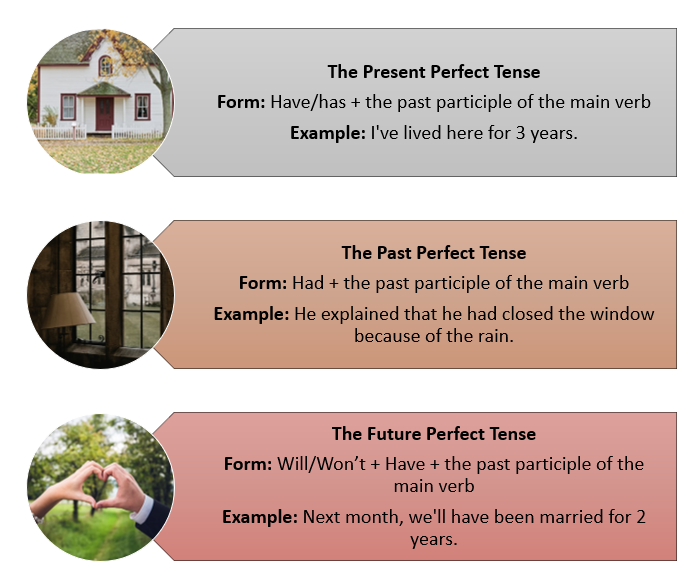
a] The Present Perfect Tense
You can use the Present Perfect tense to connect the past to the present.
Form: Have/has + the past participle of the main verb.
Examples:
The following are the examples of Present Perfect Tense based on the different usages.
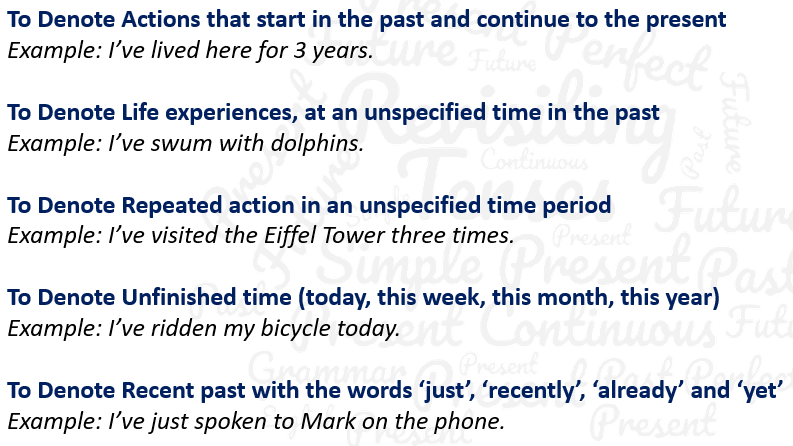
b] The Past Perfect Tense
You can use the Past Perfect tense when one action happens before another action in the past.
Form: Had + the past participle of the main verb
Examples:
The following are the examples of Past Perfect Tense based on the different usages.
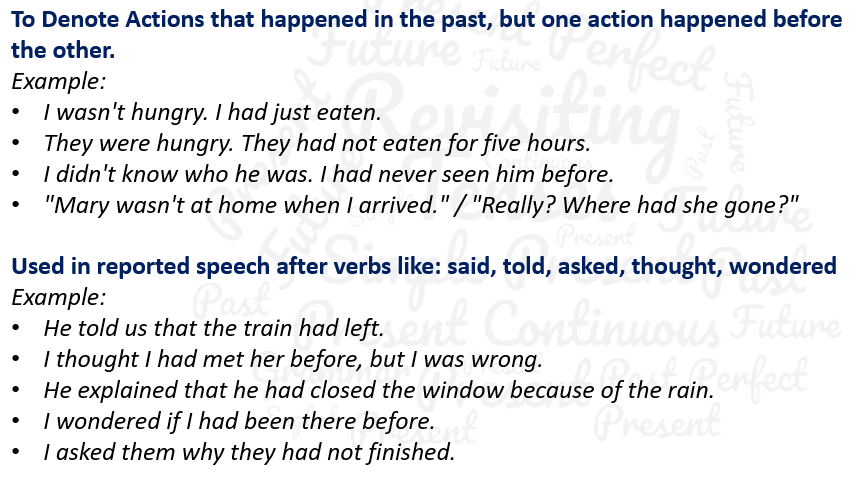
c] The Future Perfect Tense
You can use the Future Perfect tense to talk about a completed action in the future.
Form: Will/Won’t + Have + the past participle of the main verb
Examples:
The following is an example of Future Perfect Tense based.

The Perfect Continuous Tense
Here we shall compare the Perfect Continuous tense form of the verb, as used in the Present, Past and Future.
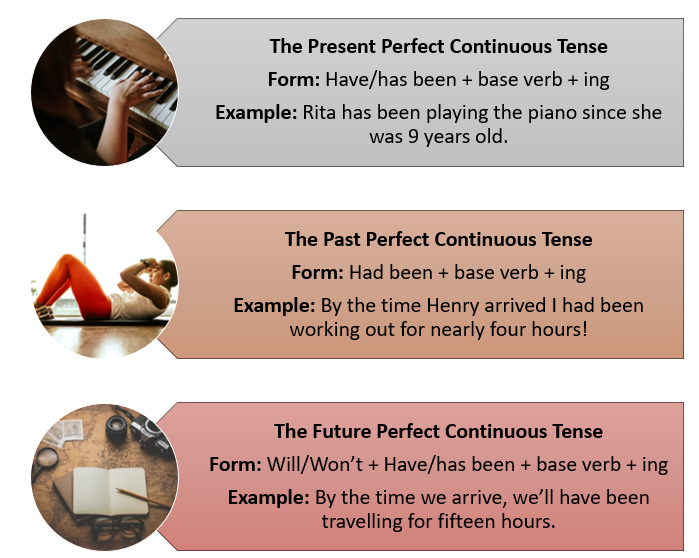
a] The Present Perfect Continuous Tense
You can use the Present Perfect Continuous tense to talk about an action that started in the past but perhaps has still not finished in the present. The process may be still going, or may have recently finished.
Form: Have/has been + base verb + ing
Examples:
The following are the examples of Present Perfect Continuous Tense based on the different usages.
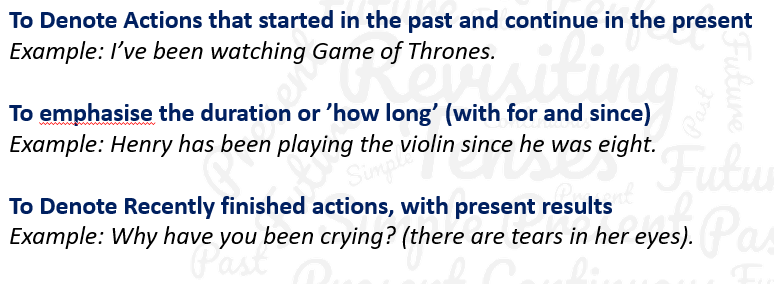
b] The Past Perfect Continuous Tense
You can use the Past Perfect Continuous tense to show that an action which started in the past continued up to another point in the past.
Form: Use the verb Had been + base verb + ing
Examples:
The following are the examples of Past Perfect Continuous Tense –
- She had been living in Italy for three years when she got married.
- I had been waiting for ten minutes before the bus came.
- By the time Steve arrived I had been working for nearly eight hours!
c] The Future Perfect Continuous Tense
You can use the Future Perfect Continuous tense to show that something will continue up until a particular event in the future.
Form: Use the verb Will/Won’t + Have/has been + base verb + ing
Examples:
The following are the examples of Future Perfect Continuous Tense –
- In October, I’ll have been working here for ten years.
- When I arrive, I’ll have been working all day, so I’ll be tired.
- By the time we arrive, we’ll have been travelling for fifteen hours.
Also, here’s the app that we were referring to in the Part 1 of this blog series.
The British Council App is available for Free and you can use it for some quick practice on the Tenses in English Grammar. You can download it for Android and for iOS users.
So, that was about the many forms of Tenses in English Grammar. Did you find this blog informative? Share your thoughts in the Comment box below as we are eager to hear from you.
